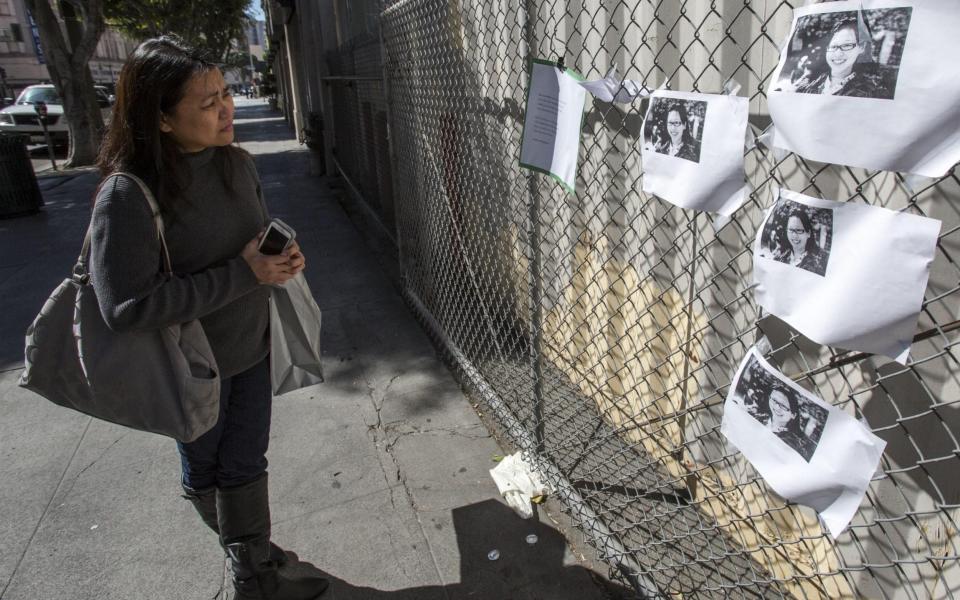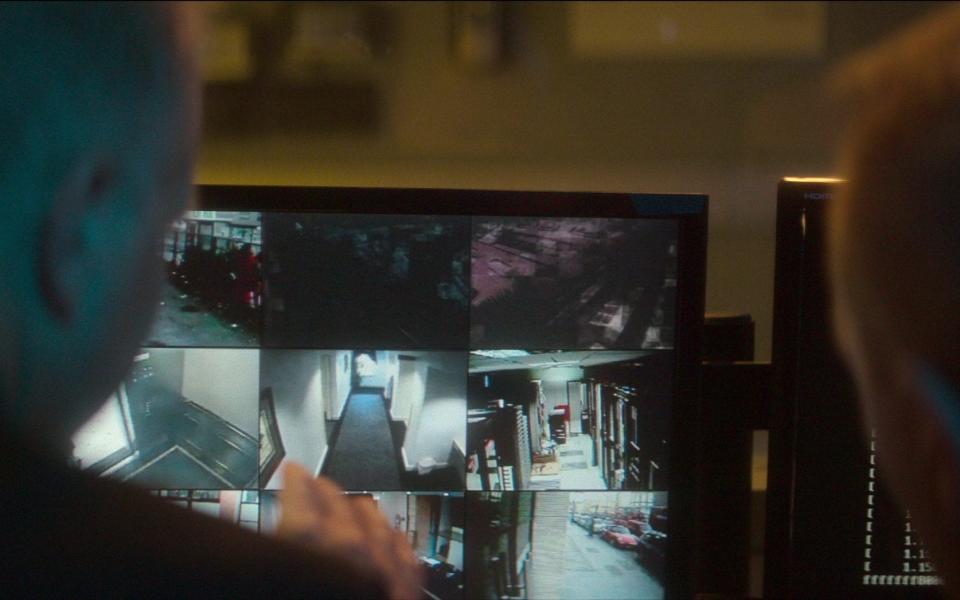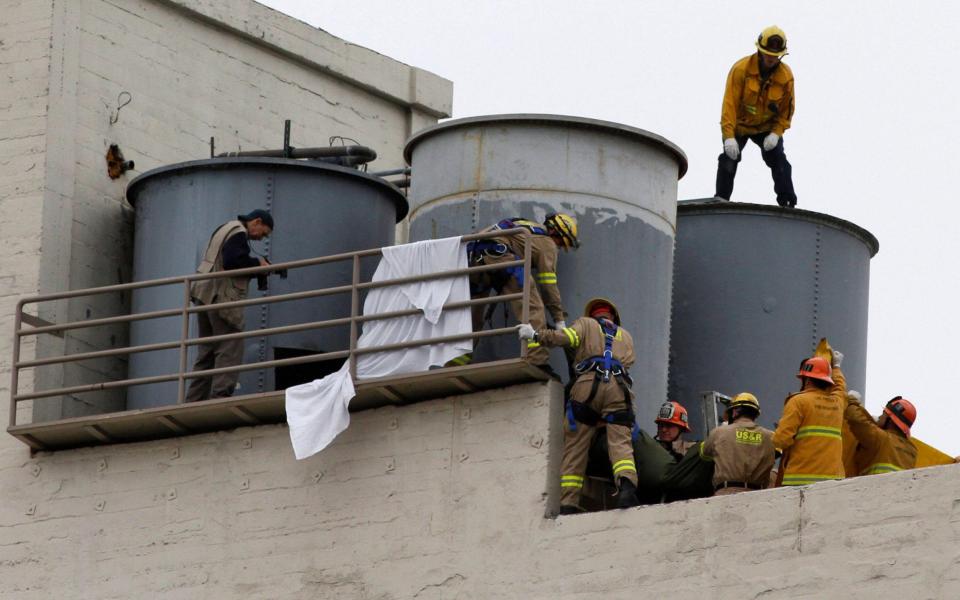How did Elisa Lam die? The haunting truth about one of Hollywood's greatest mysteries

In February 2013, the LAPD published an unnerving video online – security camera footage from Hotel Cecil in downtown Los Angeles. The footage, from inside an elevator on the 14th floor, captures the last known movements of a 21-year-old Canadian student named Elisa Lam, in the early hours of February 1, 2013. Later that same day, Lam’s parents, who were back in Vancouver, reported her missing.
Elisa had studied at the University of British Columbia but suffered from depression; she took a trip to California as a much-needed “adventure”. Elisa’s parents had been reluctant to let her go. Until that final day, Elisa – a prolific blogger on Tumblr – had been in daily contact with them.
On January 31, she visited a bookstore, and was last seen in the lobby of the Cecil. At a press conference following her disappearance, the LAPD said it was “suspicious and may suggest foul play.” With resources depleted and detectives desperate for tips, the LAPD released the video. According to retired homicide detective Tim Marcia, that was the point the case started to “go askew.”
The Elisa Lam story is now the subject of a new four-part documentary series, Crime Scene: The Vanishing at the Hotel Cecil, from Joe Berlinger – producer-director of Paradise Lost and The Ted Bundy Tapes. Like everyone else, Berlinger first saw the hotel video when it did the rounds as one of the internet’s great viral mysteries.
“I remember seeing the video at the time and being fascinated by it and the conjecture of what it could mean,” says Berlinger, speaking from New York. “And the kind of knee-jerk paranormal associations with it.”
The security camera video, which lasts three minutes 59 seconds, is utterly chilling – enough to rival any found footage horror. In the video, Elisa steps in and out of the elevator and peers around the doors, seemingly hiding from someone – or something – out of view in the corridor. The elevator door holds open – held by a pursuer, or unseen force perhaps – and Elisa behaves erratically. Her hands are animated, as if she’s negotiating with an invisible assailant, or in the grip of a bad psychotropic trip.
At two minutes 29 seconds, Elisa disappears back down the hotel corridor. For the final minute of the video, the elevator doors close and open repeatedly. Like the creepiest online mysteries and ghost stories, it exists in that grainy, digital realm – a dark corner of the internet where it’s hard to decipher what’s real and what isn’t.
On February 19, 2013, just six days after the video was released online, Elisa’s body was found in one of the hotel’s rooftop water tanks, which supplied water for the hotel’s sinks and showers. A maintenance worker had checked the tank after hotel residents complained about the water’s pressure, blackened colour, and “funny taste”.
Between web sleuths, YouTubers, Redditors, and social media commenters, the video became a source of speculation and theories. Undoubtedly, it’s strange: Elisa’s bizarre behaviour; the elevator doors; a blink-and-you’ll-miss-it object that could be someone else’s foot; and the fact the video appears to have been edited, with a jump cut and inconsistent timestamp.

The mysteries go beyond the video: how did she (or her body) get to the roof? If she climbed into the hatch of the tank, why did reports say the hatch was closed behind her? And why was she naked, with her clothes also found in the tank? All questions compounded by the ugly reputation of the Hotel Cecil itself.
The near-supernatural, conspiratorial edge to the story – perfectly at home in any number of naff murder docs on Netflix – doesn’t feel as grounded as Joe Berlinger’s usual crime and social justice documentaries. But we live in an age muddied by conspiracy theories; perception of reality is political and paramount. “The nature of truth has been an obsession of mine from the get-go,” says Berlinger. The 59-year-old filmmaker is also aiming to “turn the true crime genre on its head”.
Berlinger is part of a generation of late Eighties/early Nineties documentary filmmakers – which also includes Errol Morris, Jennie Livingston, and Michael Moore – who redefined the genre. In 1992, Berlinger and directing partner Bruce Sinofsky (who passed away in 2015) made Brother’s Keeper, about an illiterate farmer accused of murdering his own father. In 1996, Berlinger and Sinofsky made the first of their three Paradise Lost films, about the wrongful imprisonment of the West Memphis Three, who spent 18 years in prison for the murder of three young boys.
Other documentaries have included The System, about the American justice system; Crude, on industrial pollution and false climate science; and Whitey, the true story of corruption behind mobster/FBI informant James ‘Whitey’ Bulger.
In 2019, Berlinger directed two Ted Bundy projects – the Zac Efron-starring film Extremely Wicked, Shockingly Evil and Vile and the Netflix series, The Ted Bundy Tapes. Both, ultimately, are about deception.

“False narratives and the nature of truth is something I’ve always been fascinated with,” Berlinger says. “I never imagined it would get to the point where in the last couple of the years the nature of ‘is there an objective reality’? is in question.”
A journalist named Josh Dean, who has written on the disappearance of Elisa Lam, brought the idea for a potential series to Berlinger. “It felt to me like an opportunity to not just do a one-off series about the case,” says Berlinger, “but to play with some ideas I’d been thinking about for a long time – to focus on a place and the social forces that lead a place to potentially be a nexus of crime.”
Indeed, Berlinger is playing craftily with the form. Early episodes occasionally feel like they could be from a tawdry, throwaway true crime series – the kind that Netflix has churned out at a steady rate – with dramatic recreations, sound bytes, and sensationalist talking heads. The Elisa Lam mystery is a hook – a morbid fascination that anyone who's heard of the case will struggle to resist – but it’s a layered story about a much-wider context: the insidious politics that made the Skid Row area, where the Hotel Cecil stands, a hive for homelessness and crime; and the long, murky history of the Cecil itself.
First opened in 1923, the Hotel Cecil is a 15-storey art deco building with a grand lobby and 700 rooms. But the hotel – and its reputation – deteriorated over the decades. “Throughout its history, the Hotel Cecil has always had a dark persona,” says Kim Cooper, an LA historian, speaking in the series. “The details are haunting. It’s always been a hotbed for death.”

The series recalls numerous murders and suicides – including one incident in which a woman threw herself out of the hotel window and killed a man on the street below. Also, the Cecil is part of a Skid Row program which houses homeless or low income persons for weeks, months, or even years. Kenneth Givens, a former resident interviewed for the series, describes it as “lawless” during the Eighties. “The higher floors in the Cecil… people used to get killed up there,” he says.
Kim Cooper says the Cecil is a place where serial killers would “let their hair down”. One such serial killer was Richard Ramirez AKA ‘The Night Stalker’ – the subject of another recent Netflix documentary. Ramirez went on a burglary, rape and murder spree from 1984 to 1985. He retired to the Cecil after committing his crimes, dumped his clothes in the back alley, and walked to his room in bloodstained underwear.
For Berlinger, the hotel “very much is a character” in the series. “We talked about that through the entire production,” he says. “It’s why people allow themselves to believe in some of these stories. There’s such a mythology around there.”
Also striking is the series’ commentary on internet culture – how we absorb, engage, and plug back into the online world. The Elisa Lam case feels like a uniquely online phenomenon, from the digital breadcrumbs left by Elisa’s many Tumblr posts, to the viral video (“If that elevator video was put on television it wouldn’t have had the same impact,” says Berlinger), and the emerging community of web sleuths and truth-seekers.
Some online sleuths have a positive track record, such as the late Michelle McNamara, who helped put the spotlight back on and ultimately catch the Golden State Killer decades after his crimes – the subject of her posthumously published book, I’ll Be Gone in the Dark, and subsequent HBO series. But there’s a dark, obsessive edge to it.
Scenes in The Vanishing at the Cecil Hotel show web sleuths packing into the hotel, retracing Elisa’s footsteps like it’s a tourist attraction. Others latched onto a theory that a Mexican death metal singer called ‘Morbid’ had murdered Elisa – online harassment forced him to the brink of suicide. The conspiracy theories, based on little more than circumstantial evidence, get seriously bizarre, too – from questions of a hotel cover-up and suspicious coroner report, to linking Elisa’s death to the tepid horror film Dark Water and a tuberculosis outbreak among the Skid Row homeless population (one of several admittedly weird coincidences is that the tuberculosis test is called a Lam-Elisa).
Joe Berlinger witnessed the early stages of online sleuthing with his Paradise Lost documentaries. Following the trial and imprisonment of the West Memphis Three – Damien Echols, Jessie Misskelley, and Jason Baldwin, who were just teenagers when they were accused of killing three children in a satanic ritual – Paradise Lose galvanised supporters to build websites, share information, and create a movement that helped free them in 2011.
“All of that was spurred on by this dedicated group of amateur detectives who started a website and wanted to help,” Berlinger says. “I’ve seen that phenomenon in its earliest incarnation but I think as it’s progressed – as society itself has become embroiled with believing more conspiracy theories, as truth itself has become more elusive – I think this online community falls victim to that as well.”
Looking back, Paradise Lost is a precursor to what we now call “true crime” – not just documenting a case but feeling like an active part of it. Later, Serial and Making a Murderer hooked audiences by setting out to solve crimes and overturn convictions.
“I understand why, but I bristle when people call me a true crime filmmaker,” says Berlinger. “On my Wikipedia it says I’m a ‘true crime pioneer’, or something like that. I like the pioneer part, but the true crime part makes me wince. There has been a bit of backlash on true crime, though I think it’s as popular as ever. A lot of true crime leans too heavily into the perpetrators and not the victims – something I’ve been accused of on my Bundy series.”

Indeed, Berlinger faced criticism in 2019 for “platforming” Ted Bundy over Bundy's many victims. Berlinger explains that before starting his Bundy projects, he asked his college-age daughters and their friends if they’d heard of Ted Bundy. “For the most part, my daughters’ generation was unaware of who Bundy was,” he says. “That gave me a compelling reason to tell his story. The lessons of Bundy can’t be understated. Just because someone looks and acts a certain way, and is charming and good looking and white, that doesn’t mean you should trust them.
"If he was a person of colour he wouldn’t have been given the opportunity to represent himself and all the crazy stuff. That’s an important lesson I want my daughters’ generation to have, and Bundy is the epitome of that phenomenon.”
As Berlinger tells me, The Vanishing at the Cecil Hotel, has been made as a “victim focused” show. It does succeed in flipping the genre – he wanted to put a “pin prick” in the conspiracy theories and usual leanings of the true crime genre. Usually, the appeal is the tease of solving a mystery; in the case of Elisa Lam, the facts are already out there.
Elisa Lam’s death was ruled as an accidental drowning; and she was suffering from bipolar – a severe form which could cause psychotic episodes; the incident is consistent with her trying to hide from an imagined pursuer. “To dismiss Elisa Lam’s predicament as a ghost story does her a great disservice,” says Berlinger.
Watching the video with that knowledge, it's still disturbing – but for other, deeply tragic reasons. The series is about perception, and what we choose to believe. “Many people believe – even today – that there is some amiss with the official story,” says Berlinger. “The death of truth and nature of conspiracies to me is a very fundamental issue.”

